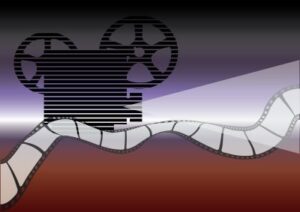Unlike novels, screenplays are not in and of themselves an end product. They’re merely blueprints for something else, like a movie or TV show. They’re a roadmap showing filmmakers how to express a story in a visual medium using tools like cameras, lights, actors, editing and music. They’re not meant to be all-encompassing narratives that explore every nuanced action, location detail, or psychological facet of a character’s mindset. Unfortunately, mastery of this delicate skill of brevity has waned to some degree in amateur screenwriting. Without this proficiency, making the leap to professional screenwriting is all but impossible.
What should I include?
When introducing a character, a basic physical description must paint a picture in the reader’s mind. Describing your heroine as a “tall, Hispanic female with kind eyes” is good because these are things the filmmakers can shoot. Saying she also “loves basketball” is not, because, well, how could we know that? Instead, think with visuals. Describe her as “wearing a basketball jersey, with NBA posters plastered to her walls,” which shows us she loves basketball.
Same rule with locations. Just give the reader the essential information needed to convey the look and feel of the place. Describe an old mansion as “spooky, bathed in shadow, cobwebs in every corner” because that can be designed, built and filmed; but saying it’s “likely filled with ghosts” does not offer any filmable information.
When it comes to the action, only describe to propel the plot or layer the character. If you’re not sure, ask yourself, will the story suffer if I remove this action? For instance, do I really need to show my heroine walking down the hall, or can I have her already in the bedroom?
What should I not include?
When it comes to physical description of a person or place, less is more. Leave out irrelevant details that do not elevate the story. Give only what’s necessary, then trust the filmmakers and actors to interpret the rest. Ditto with action. Don’t describe every kick and punch in a fight. Simply write “they fight.” The fight choreographer is better at this than you are.
Minimize personal direction, those small instructions in parentheticals above a character’s dialogue block that tell an actor how to say a line or what to do while delivering it. The actor and director can figure out how best to do it. As for camera direction (i.e., “we dolly over to our heroine”), this should almost always be reserved for the shooting script, which means a director is involved and the script has been greenlit for production. In that same vein, leave out “cut to” between scenes, as cutting from one to another is a given. Use other transitions like “dissolve to” sparingly, like when it’s the only way to demonstrate the passage of time.
What are some best practices?
Feature length screenplays are generally no more than 120 pages and TV pilots no more than 60 pages (using the average one minute per page rule of thumb). A longer script means there’s fat to trim.
Paragraphs should generally be no longer than five lines. More is a tell-tale sign of overwriting. The more white space on the page, the faster the read. Execs like a fast read, as their time is valuable and want a read to feel like they’re watching the movie. Avoid too many adverbs (words ending in -ly), which tend to slow the pacing. Instead of saying our heroine “wantonly disregards the signs,” simply say she “ignores the signs.”
In general, ensure action lines are tight, easy to read, and convey vital, filmable information. With dialogue, avoid having a character say too much. Instead, trust the reader to pick up on queues using action, subtext and inference. Actors want room to express things through all aspects of a performance, like gesture or reaction, not just words.
How will I know whether my screenplay is overwritten?
Plenty of options are available for credible feedback before taking a script to market. Join a writers’ group with a focus on screencraft. Even if you don’t live in an area with in-person groups, many exist online. Several affordable coverage services (including from yours truly) can also serve as a reliable barometer with specific feedback.
Screenwriting courses and workshops are available through programs like UCLA Extension and the New York Film Academy, either in person or online. Whatever you do, the key is to solicit feedback from neutral third parties with knowledge of the craft.
https://www.nyfa.edu/online-workshops/screenwriting/
https://www.uclaextension.edu/search/all?search=screenwriting
https://www.meetup.com/topics/screenwriters/
Now that you’re inspired, go write your script. But make it quick!
BIO: Mark Heidelberger co-founded Beverly Hills-based Treasure Entertainment in 2000, serving as a film executive, producer and literary manager until 2011 before going freelance. Film and TV credits include Harsh Times, Comfort, Ninja Apocalypse, The Basement, Take the Night, Pray for Rain, Hallmark Channel’s You’ve Got a Friend and the just-released Last Night on Earth. Often times, he performs ghostwriting services on screenplays in addition to his producing duties. He is a member of the Producers Guild of America. He holds a BA in Film Studies from UCSB and an MFA in Producing from UCLA’s School of Theater, Film, and Television.
Leave a Reply